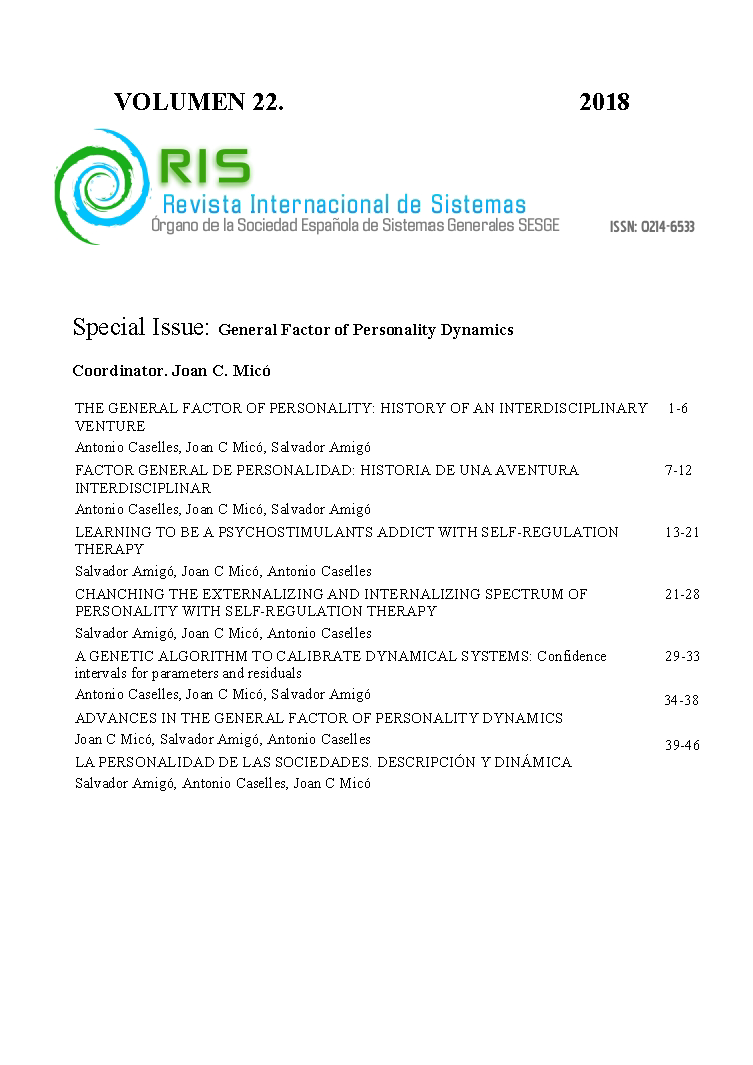LEARNING TO BE A PSYCHOSTIMULANTS ADDICT WITH SELF-REGULATION THERAPY
DOI:
https://doi.org/10.7203/RIS.22.1.11486 Resumen
Resumen
This article presents the results of a single-case experiment of alternative treatments in which a participant applied the Self-Regulation Therapy (SRT) to reproduce the effects of a stimulant drug, methylphenidate, and a sedative, alcohol. The SRT is a learning procedure based on classic conditioning and suggestion that reproduces the effect of drugs by remembering the effects they have. The participant reproduced the effects of both drugs during ten sessions held on 5 consecutive days. To record effects, adjective scales were used that measured Drug effect, High, Rush, Energy, Tension and the General Factor of Personality (GFP). The results indicated that the participant was capable of independently reproducing the effects of both the above-cited drugs, and that most of these effects were graphically represented as an inverted U-shape. This inverted U can be interpreted as a process in which effects of drugs become progressively more marked (sensitization) to become progressively less marked (tolerance). In this way, the inverted U represents the equivalent to a complete process of becoming addicted to a drug. The participant “learnt to be an addict” without using drugs. The theoretical implications and therapeutic potential of this procedure are discussed.
Descargas
Publicado
Número
Sección
Licencia
Los autores que publican en esta revista están de acuerdo con los siguientes términos:
- Los autores conservan los derechos de autor y garantizan a la revista el derecho de ser la primera publicación del trabajo al igual que licenciado bajo una Creative Commons Attribution License que permite a otros compartir el trabajo con un reconocimiento de la autoría del trabajo y la publicación inicial en esta revista.
- Los autores pueden establecer por separado acuerdos adicionales para la distribución no exclusiva de la versión de la obra publicada en la revista (por ejemplo, situarlo en un repositorio institucional o publicarlo en un libro), con un reconocimiento de su publicación inicial en esta revista.
- Se permite y se anima a los autores a difundir sus trabajos electrónicamente (por ejemplo, en repositorios institucionales o en su propio sitio web) antes y durante el proceso de envío, ya que puede dar lugar a intercambios productivos, así como a una citación más temprana y mayor de los trabajos publicados (Véase The Effect of Open Access) (en inglés).

